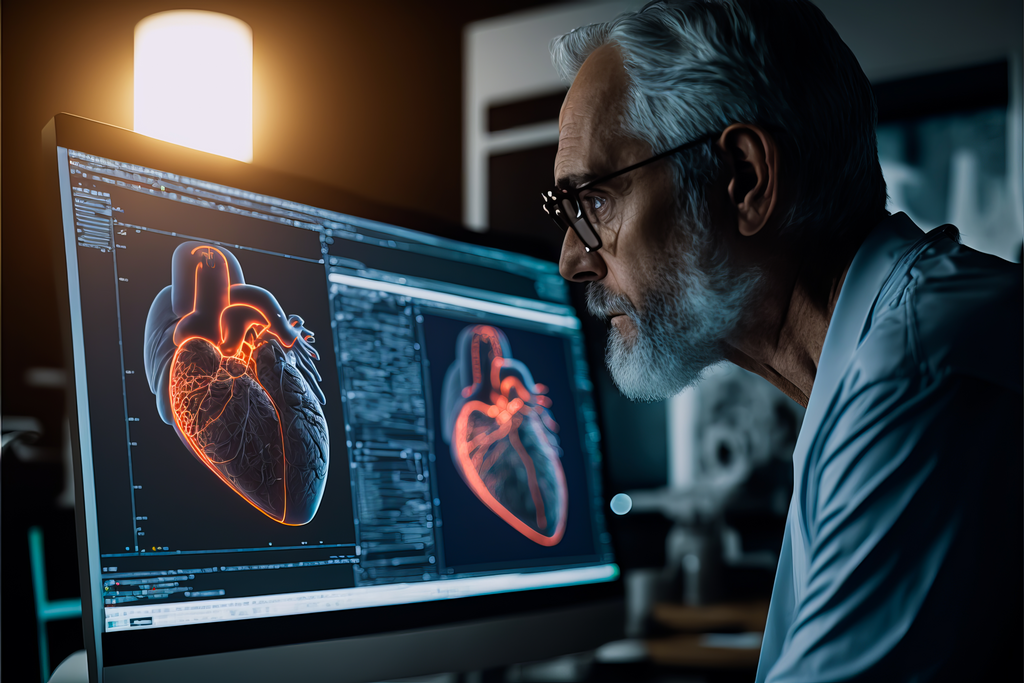Introduction to Digital Twin Technology in Healthcare

Digital twin technology is an emerging force in healthcare, representing a virtual model of a person, organ, or process that is dynamically updated with real-time data from its physical counterpart[4][6]. The National Academies of Sciences, Engineering, and Medicine (NASEM) defines a digital twin as a set of virtual information constructs that mimics a physical system, is updated with data from that system, has predictive capabilities, and informs decisions[6]. This bidirectional interaction between the physical and virtual is central to the concept[6]. However, the term is still considered fuzzy and can vary widely in its application, sometimes used as an umbrella term for any effort to digitalize the human body using computer models and simulations[1][12]. A key application within this domain is the 'virtual patient' (VP), an interactive computer simulation of real-life clinical scenarios designed for training, educating, and assessing health professionals[10]. VPs allow students to practice clinical reasoning and decision-making in a safe, controlled environment without risk to actual patients[10][19].
Constructing the Digital Twin: Data, Modeling, and AI

Creating a patient-specific digital twin requires integrating vast amounts of diverse data to build a holistic view of the individual[4]. Data sources include electronic health records (EHRs), medical imaging like CT and MRI scans, genetic and '-omics' data (genomics, proteomics), and real-time information from wearables, medical devices, and sensors[4][6]. This information also encompasses physical indicators, demographic data, and lifestyle factors[4]. At the core of the digital twin is the virtual representation, which consists of computational models that simulate human physiological phenomena[6]. These models can be mechanistic, based on the physics and biology of the system, or statistical, data-driven models built using artificial intelligence (AI) and machine learning (ML)[4][6]. AI/ML algorithms are essential for analyzing complex datasets, identifying patterns, predicting disease progression, and suggesting personalized treatment plans[4][17]. This AI-driven simulation can then be used to make prognoses and predict future health developments, such as warning a person of an imminent heart disease based on their simulated cardiovascular system[1].
Applications in Clinical Practice and Medical Education
Digital twins are poised to revolutionize healthcare across several domains. In precision medicine, they enable the creation of personalized treatment plans by simulating how an individual might respond to different therapies, allowing clinicians to test interventions on the virtual twin before applying them to the real patient[1][4]. This can improve diagnostic accuracy, reduce medical errors, and optimize drug selection[4]. Beyond individual care, the technology can optimize clinical operations by analyzing workflows and resource allocation, leading to streamlined processes and reduced costs[4][12]. Digital twins also empower patients to take an active role in their own care by providing them with access to their health data and personalized insights, fostering shared decision-making[4][7]. In medical education, Virtual Patient Simulators (VPS) offer a safe and realistic environment for students to enhance their skills[4]. Studies show that VPS training improves students' perceptions of their learning process and helps integrate theoretical knowledge with practical application[16]. This form of simulation is effective for developing crucial skills like clinical reasoning and history taking[10][19].
Validation, Trustworthiness, and the Regulatory Landscape
For digital twins to be adopted in clinical settings, they must be proven reliable and trustworthy[6]. This is achieved through a framework of Verification, Validation, and Uncertainty Quantification (VVUQ)[6]. Verification ensures the underlying code and algorithms are correct, validation assesses how accurately the model represents the real world, and uncertainty quantification formally tracks and communicates the degree of confidence in the model's predictions[6]. The highly personalized nature of digital twins presents a significant validation challenge, as traditional randomized clinical trials (RCTs) based on population averages are not suitable for an 'N-of-1' experiment[6]. Alternative approaches, such as personalized trials that randomize treatment periods within a single patient, are being explored[6]. The regulatory landscape is still evolving to keep pace with this technology[15]. The dynamic, continuously updating nature of digital twins challenges existing FDA frameworks for medical devices[6]. Despite these hurdles, some commercial applications have achieved regulatory success. HeartFlow, for instance, received FDA clearance for its AI-driven platform that creates patient-specific models for coronary artery disease, demonstrating that robust VVUQ is critical for market approval[6]. Other companies like IQVIA are also advancing commercial digital twin solutions, indicating the technology is already being implemented[8].
Ethical Issues and Societal Risks

The rise of digital twins introduces a host of complex ethical, legal, and societal implications[13][15]. Privacy is a primary concern, as these systems require a persistent, detailed picture of a person's biological, genetic, and lifestyle information[12]. This creates risks of 'big data discrimination' by entities like insurance companies, and it amplifies the potential damage from security breaches or data leaks[12]. The technology also raises questions of inequality, as it may widen the gap between those who can afford it and those who cannot[12]. Furthermore, AI models can inherit and perpetuate existing biases in healthcare data, which is often skewed towards certain demographics[12]. A central ethical challenge revolves around control and autonomy: who has the power to direct how a person's digital representation is used, and how can we prevent the simulation from being used against the individual's interests[1]? This leads to the risk of what has been termed 'illegitimate replacement' of the person by the simulation[1]. Finally, there is the question of accountability. If a diagnosis based on a digital twin is wrong, it can be difficult to determine whether the physician or the technology is responsible[12].
Get more accurate answers with Super Pandi, upload files, personalized discovery feed, save searches and contribute to the PandiPedia.
Let's look at alternatives:
- Modify the query.
- Start a new thread.
- Remove sources (if manually added).



